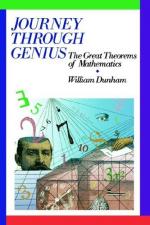
|
| Name: _________________________ | Period: ___________________ |
This test consists of 5 multiple choice questions, 5 short answer questions, and 10 short essay questions.
Multiple Choice Questions
1. What shape was NOT demonstrated in the Elements as having a relationship to other shapes?
(a) Hexagon.
(b) Pentagon.
(c) Triangle.
(d) Hyperbola.
2. After working on pi, what did Archimedes continue with in his study of mathematics?
(a) He studied the relationship between ratios in triangles.
(b) He studied the relationship of sine to cosine.
(c) He studied the volume and surface area of spheres, cones, and cylinders.
(d) He studied the volume to surface area ratios of cubes.
3. Which is a geometric concept that humans have been aware of since the dawn of agriculture?
(a) Gravity.
(b) Volume.
(c) Area.
(d) Metric system.
4. Who was the author of the book Elements?
(a) Hippocrates.
(b) Einstein.
(c) Euclid.
(d) Lindemann.
5. That properties of specific shapes were early Egyptians aware of?
(a) Right triangles.
(b) Pi and the diameter of a circle.
(c) Irregular solids.
(d) Parallelograms.
Short Answer Questions
1. Who wrote a treatise that supposed that cubic equations may be impossible to solve?
2. How many definitions were stated in Elements?
3. How did Archimedes demonstrate his theory of pi?
4. What did Euclid state about pi in Elements?
5. What does the Pythagorean Theorem state?
Short Essay Questions
1. What did Euclid state for his theory on prime numbers?
2. Explain some puzzles suggested by Euclid's theories.
3. Explain who was Gerolamo Cardano, and how did he become involved with the solution to the cubic.
4. Describe what is quadrature and why it was useful in the time of Hippocrates.
5. Explain when the knowledge of ancient scholars was rediscovered.
6. Describe what the Egyptians knew about geometry and triangles before Hippocrates.
7. What did Dunham claim was Pythagoras's major contribution to geometry, and mathematical reasoning?
8. What was already known about circles before Archimedes?
9. What did Dunham describe in the epilogue of the chapter?
10. How did Heron find the area of a triangle, and what did Dunham state about Heron's work?
|
This section contains 872 words (approx. 3 pages at 300 words per page) |

|




